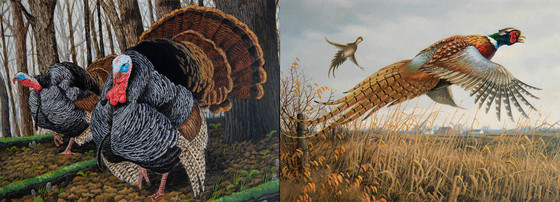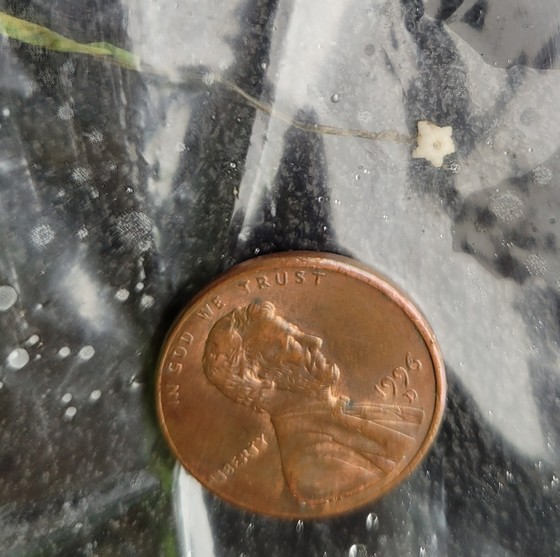In This Issue
A weekly list of news briefs about fish, wildlife, and habitat management.
Walleye regulation change would provide clarification for anglers upstream from Island Lake Reservoir
The Minnesota Department of Natural Resources is proposing a walleye fishing regulation change for sections of the Otter and Cloquet rivers (which flow into Island Lake Reservoir in St. Louis County) that would make the walleye regulation the same for the reservoir and adjacent river segments.
The proposed regulation for the Otter River from the mouth to the Boulder Lake dam, and the Cloquet River from the mouth to the rapids a half mile upstream, would require anglers to release all walleye 15 to 20 inches in length ? the same regulation as applies to Island Lake Reservoir. The river segments concentrate spawning walleye from the reservoir in the spring and consistent regulations between these connected waters will advance both fish management and enforcement objectives.
Anyone may comment on the proposed regulation by contacting Duluth Area Fisheries by email ([email protected]), phone (218-302-3264), or U.S. mail (Duluth Area Fisheries Office, 5351 North Shore Drive, Duluth, MN 55804). A public information meeting will take place 6-8 p.m. Thursday, Nov. 10, at Rice Lake City Hall, 4107 W. Beyer Road, Rice Lake Township north of Duluth. More information about fishing in this area is available at the Duluth Area Fisheries page of the DNR website (mndnr.gov/Areas/Fisheries/Duluth).
Cisco and whitefish sport netting to open on northern lakes
Recreational netting for cisco, also referred to as tullibee, and whitefish is open this fall on designated lakes. Whitefish and cisco sport netting is open to Minnesota residents only. About 700 Minnesotans participate each year. Netting schedules are based on expected water temperatures. As the water temperature cools, game fish head to deeper water while cisco and whitefish come to shallow water for fall spawning.
The DNR allows netting when there is little chance that fish other than cisco and whitefish will be caught. Game fish incidentally taken in nets must be returned to the water immediately. Complete regulations, including designated lakes, netting schedules and requirements related to use of gear and invasive species, are available on the DNR website (mndnr.gov/Regulations/Fishing).
Deer carcass movement restrictions in place in
14 deer permit areas?
Deer carcass movement restrictions are in place for 14 deer permit areas located in southeastern and north-central Minnesota and the south metro area.
DPAs 604, 605, 643, 645, 646, 647, 648, 649, 655, 661 and 679 together form the Chronic Wasting Disease management zone. Hunters are not allowed to bring whole deer carcasses outside the management zone until a ?not detected? test result is received. DPAs 255, 343 and 344 form a control zone and whole deer carcasses cannot be moved out of a control zone or the adjacent management zone until a ?not-detected? test result is received. Hunters are allowed to move whole deer carcasses in between contiguous management zone DPAs or from a control zone DPA into the management zone.
If hunters do not submit their deer for sampling or want to transport it outside these zones before getting a test result, they must debone or quarter their deer, properly disposing of the head and spinal column inside the zones. The DNR provides dumpsters for hunters to use to help facilitate carcass disposal.
These restrictions are part of a comprehensive strategy to keep Minnesota?s deer, elk and moose healthy by limiting the spread of disease. Hunters can find details for the DPA in which they hunt by visiting the DNR?s CWD page (mndnr.gov/CWD) and using the ?find your requirements for your DPA? tool.
Winner chosen for pheasant and turkey stamp contests
 Left: An acrylic painting by St. Charles artist Micah Hanson of wild turkeys in the woods. Right: An oil painting by Rushford artist Michael Sieve of pheasants in flight.
The DNR has chosen winners for the Minnesota turkey and pheasant stamp contests.
Rushford artist Michael Sieve won the Minnesota pheasant stamp contest with an oil painting of pheasants in flight. The winner was selected on Sept. 29 from 13 eligible submissions. Second place was Mark Thone of Shakopee; third place was Scott Storm of Freeport.
St. Charles artist Micah Hanson won the Minnesota turkey stamp contest with an acrylic painting of wild turkeys in the woods. The winner was selected on Sept. 29 from five eligible submissions. Second place was Sam Larsen of Bemidji; third place was Stephen Hamrick of Lakeville.
The pheasant stamp and turkey stamp can be purchased in combination with hunting licenses or as collectables. Visit the DNR stamp page (mndnr.gov/stamps) for more information about habitat stamps and contest guidelines.
DNR webinars cover the secretive fisher, pheasant research
The DNR invites people interested in wildlife and outdoor skills to tune in to upcoming webinars that will discuss fishers and research on pheasants.
The first webinar is at noon Wednesday, Oct. 5. Learn about fishers, secretive members of the weasel family found in Minnesota forests. John Erb, wildlife research biologist, and Blane Klemek, wildlife manager, will cover fisher life history, management and harvest opportunities.
The second webinar is at noon Wednesday, Oct. 12. Tim Lyons, DNR upland game research scientist, will share results from recent research on pheasant biology, management practices and bird behavior. Learn what the findings mean for pheasant populations and pheasant hunting in Minnesota.
The webinars are part of the DNR?s Minnesota Outdoor Skills and Stewardship Series. The webinars are free but registration is required. More information is available on the outdoor skills and stewardship page of the DNR website (mndnr.gov/Discover).
###
 Photo credit: Minnesota DNR
Vigilant DNR watercraft inspectors prevented the introduction of starry stonewort to Lake Superior, which is currently not known to be infested with the harmful invasive species.
A DNR watercraft inspector saw what appeared to be grass in the motor intake of a boat whose owner approached the Agate Bay public water access to Lake Superior in Lake County. Upon closer examination, the inspector noticed the small star-shaped bulbils that indicate starry stonewort. The boat owner said the boat had been on Bowen Lake in Cass County the previous weekend. Starry stonewort was confirmed on Bowen Lake in August. The inspector used the decontamination station on site to ensure the invasive species was removed before the boat entered Lake Superior.
?If not for the vigilance of this DNR watercraft inspector, starry stonewort would have been introduced to Lake Superior,? DNR Watercraft Inspection Program Coordinator Adam Doll said. ?This incident is just one example of how the DNR, our partners, volunteers and vigilant Minnesotans work together to prevent the spread of invasives. It also reminds everyone to carefully inspect watercraft when they leave any waterbody or face a fine and the possibility of spreading invasive species to a new lake.?
Nearly 900 watercraft inspectors were hired in Minnesota this year and trained by the DNR. This included about 800 local government watercraft inspectors and 100 DNR inspectors. DNR Conservation Officers also assist with watercraft inspections statewide. Local government watercraft inspectors are funded by a portion of the $10 million Minnesota counties receive to prevent the spread of aquatic invasive species.
Starry stonewort has been confirmed in 23 water bodies in Minnesota. It was first confirmed in Minnesota in 2015.
In late summer and early fall, starry stonewort?s small white star-shaped bulbils become more visible, making it easier to distinguish from other aquatic plants. Information on how to identify starry stonewort can be found on the?DNR?s website (mndnr.gov/Invasives/AquaticPlants/StarryStonewort). If people think they?ve found starry stonewort or any other invasive species new to a lake or river, they should report it to the DNR by contacting their?area invasive species specialist (mndnr.gov/Invasives/AIS/Contacts.html). People who want to help search for starry stonewort and other invasive species can also sign up for ?Starry Trek,? (maisrc.umn.edu/StarryTrek) an annual statewide volunteer event coordinated by University of Minnesota Extension.
Starry stonewort is an algae that looks like native aquatic plants and can form dense mats, which can interfere with recreational uses of a lake and compete with native plants. It is most likely spread when fragments have not been properly cleaned from trailered boats, personal watercraft, docks, boat lifts, anchors or other water-related equipment.?
Whether or not a lake has any invasive species, Minnesota law requires people to:
-
Clean?watercraft, trailers and equipment to remove aquatic plants and prohibited invasive species.
-
Drain?all water and leave drain plugs out during transport.
-
Dispose?of unwanted bait in the trash.
-
Never release?bait, plants or aquarium pets into Minnesota waters.
-
Dry docks, lifts and rafts for 21 days?before moving them from one waterbody to another.
These additional steps reduce the risk of spreading aquatic invasive species:
-
Decontaminate watercraft and equipment ? find free stations on the courtesy decontamination page of the DNR website (mndnr.gov/Decon).
-
Spray with high-pressure water or rinse with very hot water (120 degrees for at least two minutes or 140 degrees for at least 10 seconds).
-
Dry watercraft and equipment for at least five days before using in another water body.
More information is available on the aquatic invasive species page of the DNR website (mndnr.gov/AIS).
###
Grants help develop, expand shooting ranges
throughout Minnesota
The Minnesota Department of Natural Resources is seeking applicants for about $48,000 in grants to develop and expand shooting ranges in the state. The money, which the Legislature provided to address shooting range capacity issues, is available on a first-come, first-served basis. The applicant period is open-ended, but funding expires June 30, 2023.
The grants, which require a 1:1 match, are available for work on five-stand, pistol, rifle, skeet or trap ranges. Grants from $2,500 to $25,000 are available, and grantees must allow members of the public to shoot at reasonable times and for reasonable fees.
?We?ve provided grants to eight shooting ranges in the past few months, which is a positive step toward ensuring anyone who wants to participate in shooting sports has the opportunity to do so,? said Chuck Niska, DNR shooting range coordinator. ?These remaining grant dollars will help further enhance access.?
Recently approved grants are for shooting ranges in Blooming Prairie, Cass Lake, Forest Lake, Gaylord, Hampton, Leroy, Litchfield and McGregor.
For more information, see the DNR?s shooting range grants page of the website (mndnr.gov/Grants/Recreation/RangeDev3.html).
###
|
